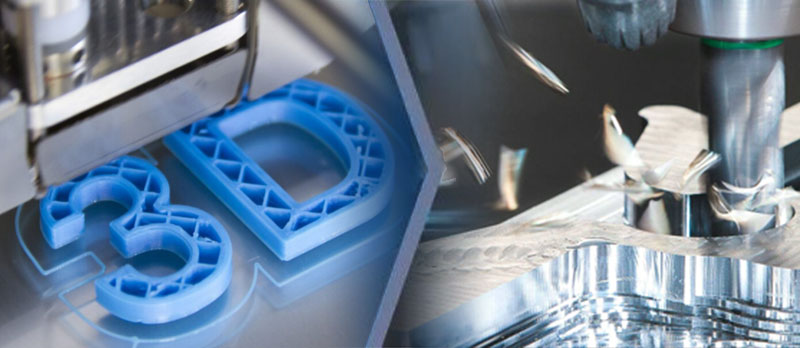In the realm of non-standard component manufacturing, these two processes each have unique advantages and characteristics, but also have certain shortcomings. So, when facing the processing of non-standard components, how should we choose the appropriate processing technology?
Advantages and disadvantages of CNC machining and 3D printing
Advantages of CNC
High precision, capable of manufacturing parts with strict dimensions and geometric shapes.
Supporting multiple materials, including metals, plastics, etc., makes it very flexible and suitable for various application scenarios.
Very high dimensional consistency is very advantageous for manufacturing components that strictly require size and geometric shape.
Suitable for small batch or small-scale component production, with strong flexibility.

Disadvantages of CNC:
Usually requires a longer processing time, so the cost is relatively high.
Due to the need to cut parts from block materials, there may be a significant amount of material waste.
Advantages of 3D printing:
Can quickly produce samples and prototypes, accelerating the process of product development.
Products can be customized according to needs, suitable for small batch production and personalized customization.
It can manufacture complex internal structures, thin-walled structures, and geometric shapes, which are difficult to achieve with traditional machining.
Suitable for small batch production, but may not be efficient in large-scale production.
Disadvantages of 3D printing:
The accuracy and surface quality are relatively poor compared to CNC, and are not suitable for high-precision parts.
The types of printing materials are limited and may not meet specific material requirements.
In large-scale production, 3D printing may not be efficient.
Characteristics For CNC Machining And 3D Printing
1. Complexity of Design:
CNC Machining: Ideal for complex designs with intricate details. CNC machines can precisely cut and shape a wide range of materials, allowing for intricate geometries.
3D Printing: Suited for intricate and complex designs that may be challenging or impossible to achieve with traditional machining methods.
2. Material Options:
CNC Machining: Offers a broad range of material options, including metals, plastics, composites, and more. Well-suited for applications requiring specific material properties.
3D Printing: Material options are expanding but may not match the diversity of CNC machining. Common materials include various plastics, metals, and some composites.
3. Speed and Efficiency:
CNC Machining: Generally faster for large-scale production runs. Well-established CNC processes are efficient for repetitive tasks.
3D Printing: Often slower than CNC machining, especially for large volumes. However, it excels in rapid prototyping and low-volume production.
4. Prototyping vs. Production:
CNC Machining: Efficient for both prototyping and production runs. Well-suited for producing a high volume of identical components.
3D Printing: Excellent for rapid prototyping due to its layer-by-layer additive process. Suitable for small to medium production batches.
5. Tolerances and Surface Finish:
CNC Machining: Achieves tight tolerances and excellent surface finishes. Ideal for applications where precision is critical.
3D Printing: Tolerances and surface finishes may not match those of CNC machining. Post-processing steps might be necessary to improve the surface quality.
6. Material Waste:
CNC Machining: Generally produces less material waste, as it subtracts material from a larger block or billet.
3D Printing: Additive nature can result in more material waste, especially when support structures are needed.
7. Cost Considerations:
CNC Machining: Initial setup costs may be higher, but per-unit costs can decrease with larger production volumes.
3D Printing: Lower initial setup costs but may have higher per-unit costs, making it more suitable for low to medium production volumes.
8. Post-Processing Requirements:
CNC Machining: Often requires minimal post-processing, especially for high-quality finishes.
3D Printing: May require post-processing steps like sanding, polishing, or additional curing, depending on the printing technology and material used.
Conclusion:
Choosing between CNC machining and 3D printing for non-standard component machining depends on the specific requirements of the project. While CNC machining offers precision, a wide range of materials, and efficiency for production, 3D printing excels in rapid prototyping and is well-suited for complex geometries. The decision should be based on factors such as design complexity, material requirements, production volume, and cost considerations. In some cases, a hybrid approach combining both technologies might offer the best solution for certain applications.



